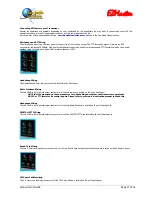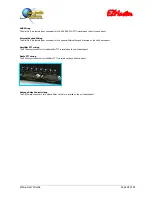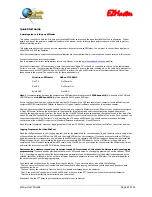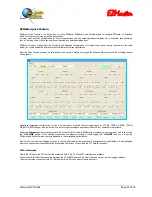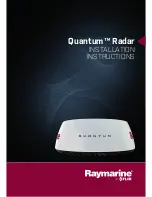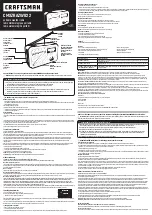
EZMaster
EZMaster
User’s Guide
Page 8 of 53
Features
Operating Modes
EZMaster has three different modes of operation: Standard, Extended and Advanced. Such modes allow the maximum operating
flexibility within any environment or set-up.
Standard Mode
This is the default mode. Within this mode EZMaster supports devices connected through legacy ports, and there is no need for
configuration. In this mode inputs are accepted through the LPT Port, like the CW line, the A/B line, the PTT line, the DVP lines and the
Band Map lines, or via the USB / RS232 Port like the CW/DTR line and PTT/RTS line. The Radios are connected to the EZMaster USB
and/or RS232 ports that route to the Radio interface for Radio A and B.
Extended Mode
The Extended mode is a Standard mode with some added functions. This mode allows the user to benefit of most of the EZMaster
features. Basically, in addition to Standard Mode features, the user can configure the 32 Antenna Relay Outputs, can define which DVP
memory bank to play (1.4) out of the available banks (1.7). The user can also define the delay time, between the PTT and PTT delayed
line, for both Radios and use the External Keypad.
Advanced Mode
The Advanced Mode is the most sophisticated way to gain full advantage of all the EZMaster features. The USB / Serial connection is
the only way to exchange data with EZMaster: this unique feature allows the use of the latest Computer / Laptop models available on
the market, where no legacy port are available anymore, or, with a legacy PC, there is no need to install multi-serial or multi-parallel
ports cards where normally there were only one or two serial port and one parallel port available, thus avoiding all those resource-
sharing problems. The Advanced Mode allows the user to have a full control of the device, where all commands are executed in real-
time, and where the commands are simple line commands and a few set-up parameters (when needed). See the
Command
Reference
section.
The Advanced Mode can be used in combination with the Parallel (LPT) port, thus allowing a total control over the EZMaster, like having
the CW keying through the parallel port and the other functions through EZMaster command.
Functionality and characteristics
Voice Keyer
EZMaster include an high quality Voice Keyer, with 7 memories, for a total recording of 75 sec. All its functions are controlled by a
micro-controller, inside the unit, to provide a simple, yet versatile, interface to a PC. Several types of interface can control the recording
and playback functions of the Voice Keyer: Parallel port, Front Panel Keyboard, External keypad and Command Mode Interface.
The user can program 7 (seven) messages starting from 20 seconds down to 8 seconds long (refer to the table below for the maximum
length of each memory).
The audio message output level can be internally adjusted (factory set). The first message can be configured to run in a "repeat loop"
mode to continuously repeat after a user defined delay. Logging programs, in the ADVANCED MODE, can access all the seven
messages.
The EXTENDED MODE allows full access to all the seven messages when the EZMaster unit is also connected to the Parallel LPT port.
TRLog, CT, NA and WriteLog support only the first 4 (four) DVK messages, via the LPT port. Win-Test enables all seven memories.
The Abort Message, for all the logging programs, following the NA Standard LPT port pin 2, is also supported.
DVK Memory
Max. Length
Message #1
20 sec.
Message #2
15 sec.
Message #3
8 sec.
Message #4
8 sec.
Message #5
8 sec.
Message #6
8 sec.
Message #7
8 sec.
CW Keyer
EZMaster includes the last generation CW Keyer, K1EL
WINKEY ®
. This Keyer’s tremendous flexibility allows the keying to be tailored
to each operator’s taste. A manual CW Speed control knob is also available on the front panel, while the Paddle input is available on the
back panel.
A detailed description of all the features and functions is available at the
www.k1el.com
WINKEY ®
website.

















